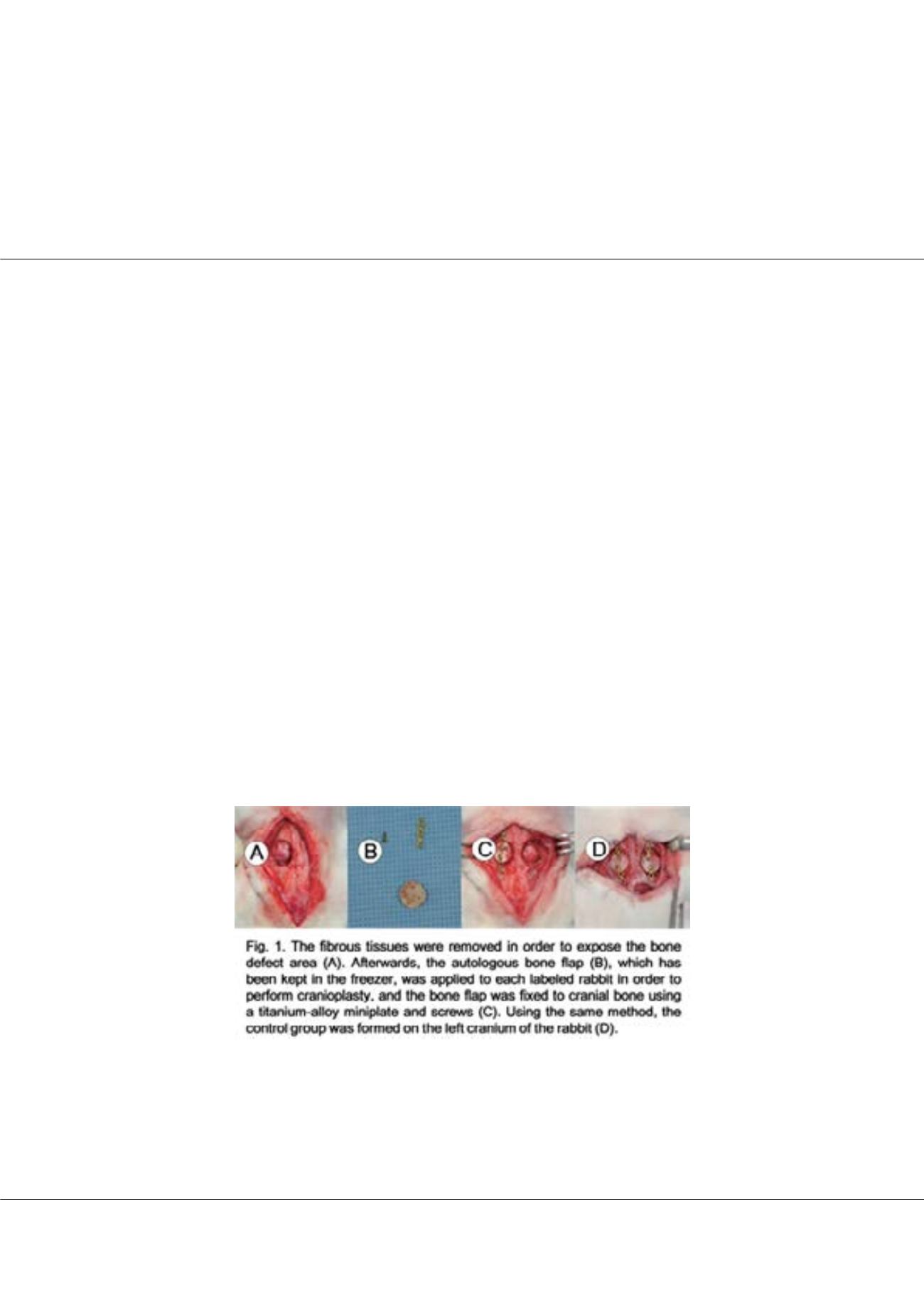

Page 73
conferenceseries
.com
RRJOMS | Volume 5 | Issue 4 | July, 2017
July 27-29, 2017 Vancouver, Canada
10
th
International Conference on
Emerging Materials and Nanotechnology
New bone formation and fusion relevant to timing of cranioplasty via frozen autologous bone flaps in
rabbits: A preliminary report using micro-CT scans and tissue staining analysis
Deok-Won Lee
1
and
Sung ok Hong
2
1
Kyung Hee University, South Korea
2
Catholic Kwandong University, South Korea
Introduction:
The timing of cranioplasty and method of bone flap storage are known risk factors of non-union and resorption
of bone flaps. In this animal experimental study, we evaluated the efficacy of cranioplasty using frozen autologous bone flap,
and examined whether the timing of cranioplasty after craniectomy affects bone fusion and new bone formation.
Method &Materials:
Total 8 rabbits (male, older than 16 weeks) were divided into two groups of early cranioplasty group (EG,
4 rabbits) and delayed cranioplasty group (DG, 4 rabbits). The rabbits of each group were performed cranioplasty via frozen
autologous bone flaps 4 weeks (EG) and 8 weeks (DG) after craniectomy. In order to obtain control data, the cranioplasty
immediate after craniectomy were made on the contralateral cranial bone of the rabbits (control group, CG). The bone fusion
and new bone formation were evaluated by micro-CT scan and histological examination 8 weeks after cranioplasty on both
groups was done.
Results:
In the micro-CT scans, the mean values of the volume and the surface of new bone were 50.13±7.18 mm
3
and
706.23±77.26 mm
2
in EG, 53.78±10.86 mm
3
and 726.60±170.99 mm
2
in DG, and 31.51±12.84 mm
3
and 436.65±132.24 mm
2
in CG. In the statistical results, significant differences were shown between EG and CG and between DG and CG (volume:
p=0.028 and surface: p=0.008). The histological results confirmed new bone formation in all rabbits.
Conclusion:
We observed new bone formation on all the frozen autologous bone flaps that was stored within 8 weeks. The
timing of cranioplasty showed no difference of degree of new bone formation. Not only the healing period after cranioplasty
but the time interval from craniectomy to cranioplasty could affect the new bone formation.
This study was supported by a grant from the National Research Foundation of Korea (NRF-2014R1A1A1002630 and NRF-
2016R1A2B4014600)
Biography
Deok-Won Lee is an Oral and Maxillofacial Surgery Specialist and Associate Professor of Kyung Hee University College of Dentistry. His expertise is in treating
and improving the oral and maxillofacial health and wellbeing of people. His research on dental implant materials creates new pathways for improving healthcare.
He is continually building and investigating on adequate material for implantation through
in-vivo
and
in-vitro
models based on years of experience in research,
evaluation, teaching and administration both in hospital and education institutions
verycutebear@hanmail.netDeok-Won Lee et al., Res. Rev. J Mat. Sci. 2017
DOI: 10.4172/2321-6212-C1-003
















